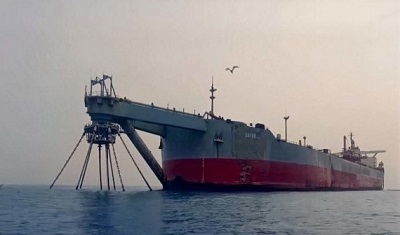United Nations, (Samajweekly) In a major step forward, a replacement vessel has sailed from Djibouti to replace the decaying super oil tanker FSO Safer off Yemen’s Red Sea coast, a UN spokesman said.
“The UN-led project to prevent a massive oil spill from the decaying FSO Safer … took a major step forward over the weekend when the replacement vessel Nautica sailed from Djibouti en route to the Safer site,” Xinhua news agency quoted Stephane Dujarric, the chief spokesman for UN Secretary-General Antonio Guterres, as saying.
All technical preparations and agreements have been finalised, he said, adding that once the replacement vessel arrives, the oil aboard the Safer will be pumped out in a ship-to-ship transfer that is expected to take about two weeks to complete.
The Safer, moored off Hodeidah port, holds an estimated 1 million barrels of oil. It has been at risk of breaking up or exploding for years.
“Removing the threat the Safer poses will be a huge achievement for the many people who have worked tirelessly on this complex and difficult project over months and years to bring us to this point,” said Achim Steiner, the UN Development Programme (UNDP) administrator.
“We will not rest until that threat is gone, and today we are close to beginning the operation.”
The UNDP, implementing the oil removal operation, said the leading marine salvage company SMIT stabilised the Safer since arriving at the site on May 30.
After the ship-to-ship transfer of the oil, the next critical step is the installation of a catenary anchor leg mooring buoy to which the replacement vessel will be safely moored.
Dujarric said last week that the oil will stay in the replacement vessel until an agreement on disposal is reached.
The Safer has been moored in the Red Sea since 1988.
It was estimated last year that if the Safer triggered an environmental catastrophe, it could cost $20 billion.









